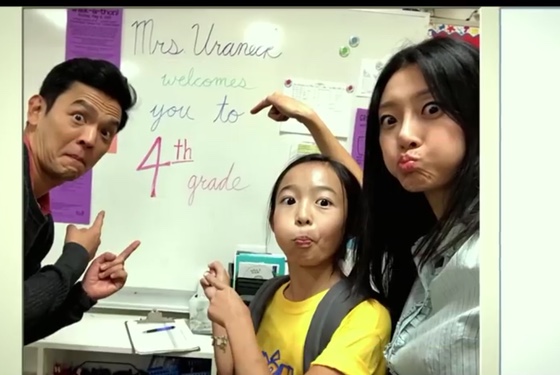When I heard that Searching was a good movie, I was skeptical. A feature-length mystery told on a computer? Stuff like this always sounds good in theory. But when you get into the writing process, the scale of just how difficult it is becomes apparent. Even the simplest moments can be hard to work out. For example, let’s say your hero has to go to someone’s house and confront him. In a normal movie, you just write the scene. But in a gimmicky computer-only movie, you must construct the whole thing through this artificial lens of “reality” seen through the eyes of computers. So what’s your hero going to do? Show up with an iphone in his hand and record the whole thing himself? Why would he do that?
One of the things I’ve become extremely appreciative of in screenwriting over the years is authenticity. As long as a scene feels genuine and truthful, I’m invested. The second the writer starts constructing artificial reasoning into the plot beats, I check out. This is one of the reasons found-footage died. The grandfather of the genre, Blair Witch, made sense in that the group was documenting their search for a legend. But as found footage was forced to get bigger, writers had to work harder to justify why people would be holding cameras in situations. I mean, if you’re writing the found footage version of Die Hard, why would John McClane be holding a camera up to tape Hans while Hans held John’s wife hostage? Yet these were the kinds of scenarios found footage was asking us to buy into.
So I was shocked that Searching not only made all of its artificial beats plausible, but used its unique medium to improve those beats. There’s a moment in the film where the dad is convinced one of his daughter’s friends is responsible, so he confronts him at a movie theater and punches him in the face. Again, you can’t just show this scene like you would in a traditional movie. So, instead, we see the scene through a teenager at the scene who recorded it on their phone and uploaded it to Youtube (“Crazy Dad Theater Attack”). But what’s really amazing about this movie is that it’s got the tightest screenplay I’ve seen all year. There isn’t a single wasted moment. And what’s most surprising is that despite its cutthroat pacing, it still manages to pack an emotional wallop. Amazing character development AND great plotting? How often do we see that these days? Here are 10 screenwriting lessons to take away from Searching…
WARNING: LOTS OF SPOILERS BELOW (Searching is available to rent. I suggest you watch it before reading the below tips)
1) A little emotion early can go a long way late – A lot of people will leave this movie talking about its unique form of storytelling. But Searching’s secret sauce actually occurs during its first five minutes. It’s here where we see, through pictures, video and e-mail, how David loses his wife (and Margot, her mother) to a two year battle with cancer. Searching would’ve been a decent film without this scene. But it becomes a great one with it. Connecting these two through that devastating loss makes us root a million times harder for them to reunite.
2) When writing a mystery, create a character that the audience is convinced did it, then later on, clear that person – This advice is as old as the mystery, but it still works great. Writers Aneesh Chaganty and Sev Ohanian make sure to construct the brother in such a way where we know he did it. Hell, I was 90% sure he did it. If you can successfully trick the audience into believing this, later on, when the character is cleared, it leaves us floating in space, unsure of everything we thought we knew. As a reader/viewer, that’s exhilarating. Because now anyone could be the killer. And we have to read on to find out who that is.
3) The sweet spot for an inciting incident is page 15 – The “inciting incident” is when the official “problem” arrives, the thing that turns your hero’s life upside-down. In Searching, that’s when Margot goes missing. And it happens at exactly the 15 minute mark. You can certainly have your inciting incident occur sooner. Some writers put it as early as page 1 (10 Cloverfield Lane would be an example). But the reason page 15 works best is that it gives you 15 pages to establish your characters. This is important because why would we care about someone’s problem if we don’t know anything about them?
4) In mysteries, you need a, “Okay, here’s what I have so far” character – In a mystery, your hero will be coming across a lot of information. It’s important then, that every once in awhile, they share where they’re at with the reader. The best way to do this is to create a character specifically designed to convey that information – the “Okay, here’s what I have so far” character. In Searching, that character is the brother. David periodically checks in with him via Facetime to tell him (and by association us) everything he’s got, as well as get feedback on what he should do next.
5) Create mini-movies within the movie – A script can seem endless when looked at from afar. How does one come up with 100 straight minutes of a guy looking for his daughter? You come up with it by chopping your script down into smaller goal-driven movies, then playing those mini-movies out for 10-15 minutes at a time. After David connects with Detective Vick, one of the first things she says is, “I need to know everything I can about Margot’s friends. Can you help me with that?” Bam: Just like that, we have a mini-movie. The next 10 minutes are dedicated to David calling and talking to Margot’s friends, trying to learn everything he can about them and how they’re associated with Margot. Amateur screenwriters don’t know how to do this, which is why their scripts feel so scattershot and unfocused.
6) Position the real killer early on as a hot suspect, then clear them – I actually learned this by watching Investigation ID shows. What you do is you focus on a hot suspect. Here, it’s Fish_N_Chips, a girl Margot talks to online a lot, but who she’s never met in real life. David goes through their YouCast archives, and the girl definitely seems suspicious. However, when Detective Vick goes to check her out, she comes back with the frustrating news that the girl has an airtight alibi. — But here’s the trick to making this work. By writing the person off so early, we forget about them. That way, when they reemerge late, we have a big “oohhhhh yeahhhhh” reaction due to the fact that we knew, just KNEW, that that girl was suspicious. This is so much better than what lazy writers pull – which is to pluck a random killer out of thin air at the last second.
7) Exploit what’s unique about your story – One of the first things you should ask yourself when you’re writing something is, “What’s unique about my story?” Once you know the answer, you can look for ways to exploit it. Since a lot of Searching takes place via text messages, it allows the writers to occasionally get inside David’s head via deleted messages. David will want to say something… “Your mom would be proud.” Which we see him write out. But then he changes his mind and deletes the text before sending it. It’s this clever little way to let us know what the hero is thinking.
8) Be clever in how you reveal exposition – One of the easiest ways to determine where a screenwriter is in their journey is to see how they deal with exposition. The more on-the-nose, overwritten, and dialogue-driven exposition is, the newer the writer. The more clever the exposition is exposed, the more advanced they are. Searching has one of the best uses of exposition I’ve seen all year. At one point, David must go into his wife’s old computer profile to find information about Margot. He opens it up and the first thing he sees is a pop-up: “You have not run Norton Anti-Virus in 694 days.” And just like that, we know how long his wife has been dead.
9) Killers working together give you a huge advantage over the reader – If you have two killers working together, it’s way easier to throw readers off the scent. And since tricking a reader these days is super-hard, the dual-killer setup can be a secret weapon. What we eventually learn in Searching is that Detective Vick’s son is the “killer.” Therefore, she’s trying to cover up what he did. Remember Fish_N_Chips? The early primary suspect? It turns out that was Detective Vick’s son. Because Chaganty and Ohanian were using a two-killer setup, they were able to have Detective Vick “visit” Fish_N_Chips and confirm that “she” had an alibi. Without the two-killer setup, explaining why Fish_N_Chips was let go early would’ve been impossible.
10) Make hard-to-believe plot points easier to believe via set-ups – In almost every screenplay, there will be a few plot points that are hard sells. The best way to deal with these is to SET THEM UP EARLY ON. If we feel like something’s already been established, we’ll be more likely to go with it. Searching has a hard-to-believe plot point in its third act – a live-cast of Margot’s funeral. Aneesh Chaganty and Sev Ohanian take care of this by having the Live Cast company contact David earlier in the script, when his missing daughter story has gone national. They’re basically a business looking to make a sale. David tells them to fuck off. “SHE’S NOT DEAD!” More importantly, the brief interaction makes the reemergence of the Live Cast more believable in the third act.




